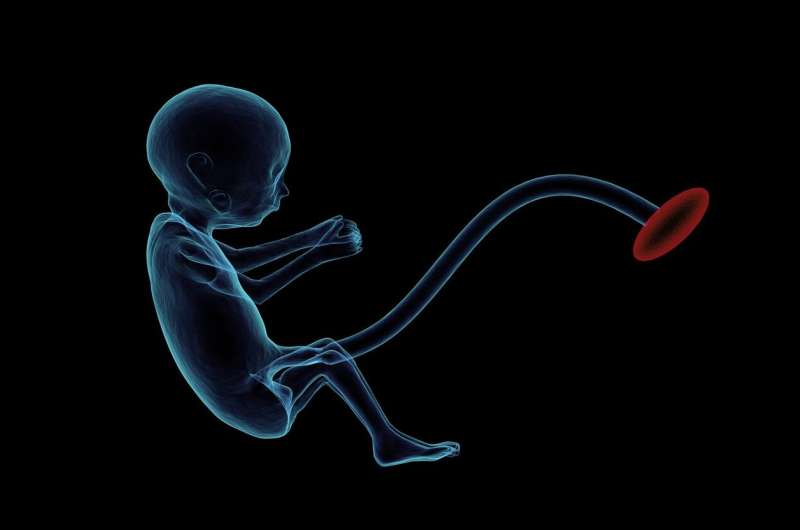Cooperation and competition: How fetal and maternal cells evolved to work together

Stephanie Baum
scientific editor

Robert Egan
associate editor

The maternal–fetal interface is the meeting point for maternal and fetal cells during pregnancy. It's long been understood as an area of conflict, where the placenta—a fetal organ—invades the mother to access nutrients.
This is an unusual situation, because in a normal case, foreign cells should be rejected by the immune system. During pregnancy, they are tolerated. However, the mother's cells also limit this invasion to an optimal state. The fight has continued for millions of years in evolution.
In the latest issue of the Proceedings of the National Academy of Sciences, a team led by Kshitiz, associate professor of biomedical engineering at the UConn School of Dental Medicine, that pregnancy is not solely a conflict between mother and baby, but rather, a delicate balance of cooperation and competition that has evolved overtime to ensure a successful pregnancy.
Postdoctoral fellows Yasir Suhail and Wenqiang Du, along with Gunter Wagner at Yale and Junaid Afzal at the University of California San Francisco (UCSF) also contributed to this research.
Wagner, former chair of evolutionary biology at Yale, and Kshitiz previously argued that there must be cooperation between the mother and the fetus in order to sustain the pregnancy. Although the scientific discipline has mostly talked about genetic conflict, evidence of cooperation which modulates this conflict has been lacking.
"The maternal–fetal interface—for this is what the placenta–uterus interaction is called—is like an unresolved frontier between countries. There is so much difference between different species, which is not found for any other organ," said Kshitiz.
In anticipation of pregnancy, the endometrium undergoes a process called decidualization, the thickening of the tissue which women experience in each menstrual cycle. This process of deposition of matrix prevents excessive invasion by placental cells into the endometrium. Afzal and Du demonstrated that placental cells influence the mother's own cells to degrade their own matrix—a surprising finding.
"It is this active persuasion by the placental cells which made the mother's endometrial cells reduce her own defenses by secreting a protein, which was so surprising," Wagner said.
Suhail modeled the molecular interactions between placental and endometrial cells as an electric flow problem, identifying the key circuit underlying this manipulation.
"It is rare and heartening to see such close integrated collaboration between computation and experimentation. My model was created using experimental data, and the discovery was validated by experiments," said Suhail.
In game theory, the mix of competition and cooperation is known as co-opetition. The maternal–fetal interface, the researchers found, is home to myriad cell interactions that embody the true meaning of co-opetition.
Kshitiz credits a conversation with an economics professor from the United Kingdom, Dr. Anshuman Chutani, who told him about the extensive literature in econometrics on co-opetition.
"It is a term which we gladly borrowed," said Kshitiz. "It is not merely cooperation by the endometrium, but induced cooperation between competitors."
In the maternal–fetal interface, the fetal cells work to actively persuade maternal cells to stop building protective tissue so that fetal cells can effectively invade the placenta and retrieve nutrients. Crucially, this interaction does not happen alone—it depends on the mother's cells' own readiness to respond to signals coming from the placenta. This proves that placental invasion is more of a combination of competition and cooperation between maternal and fetal tissues, not simply an area of conflict as previously believed.
This discovery does not only shed light on pregnancy complications that involve problems with placental invasion, such as placenta accreta and preeclampsia, but may also have broader implications on cancer metastasis and understanding how certain cancers invade the body.
"This study, jointly conducted by scientists at UConn Health, Yale, and UCSF, can shift the way we think about conflict between generations, right when the fetus is still in mother's womb," said Kshitiz.
More information: Junaid Afzal et al, Evidence for coopetition at the maternal–fetal interface shaping placental invasion, Proceedings of the National Academy of Sciences (2025).
Journal information: Proceedings of the National Academy of Sciences
Provided by University of Connecticut

















